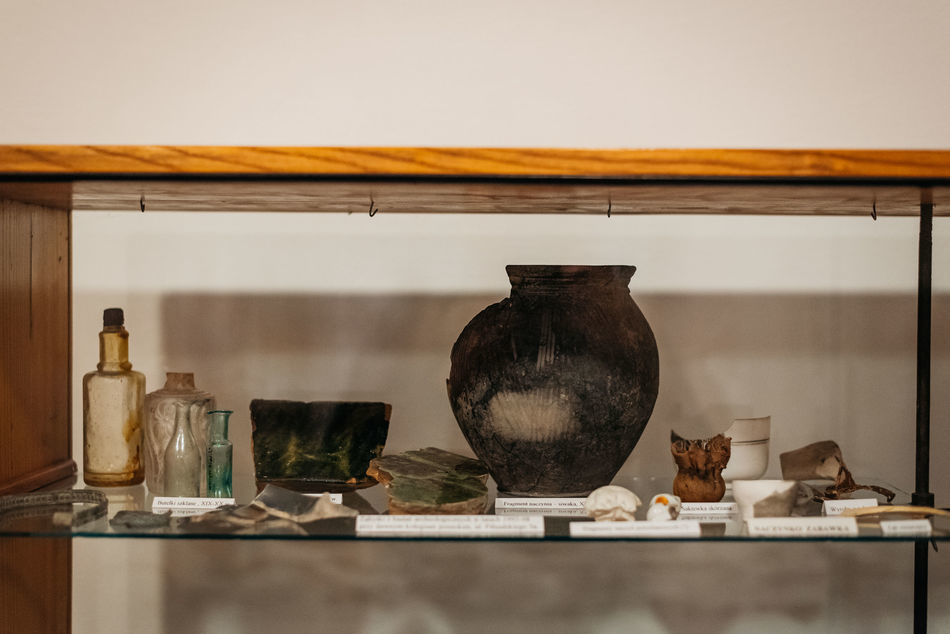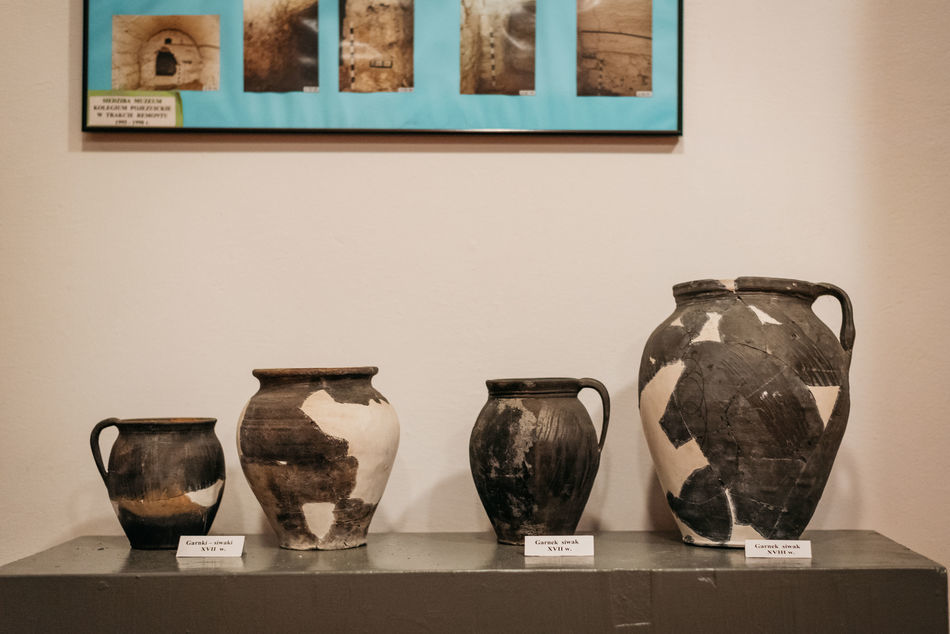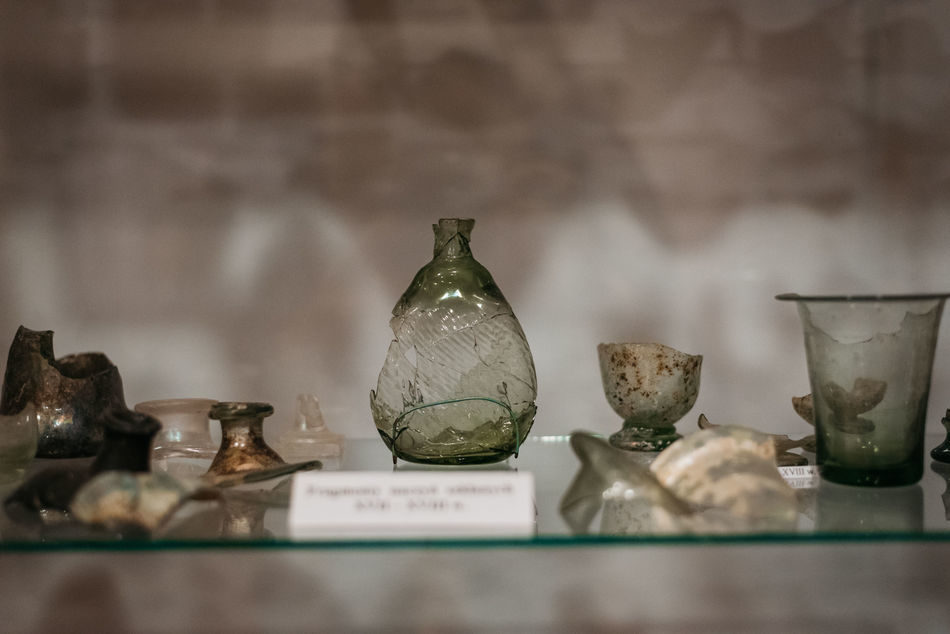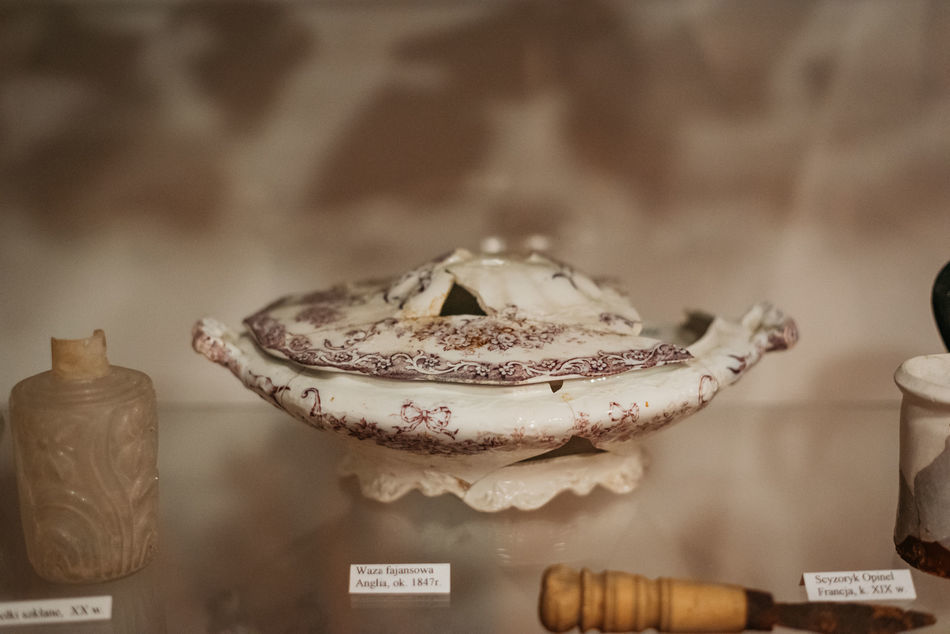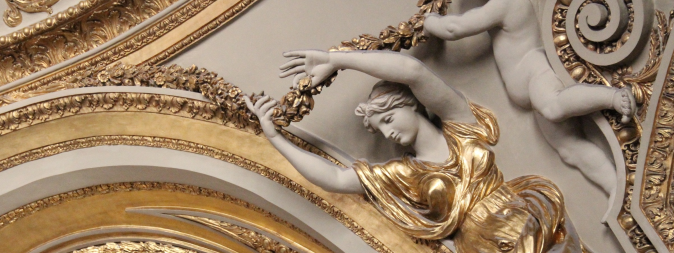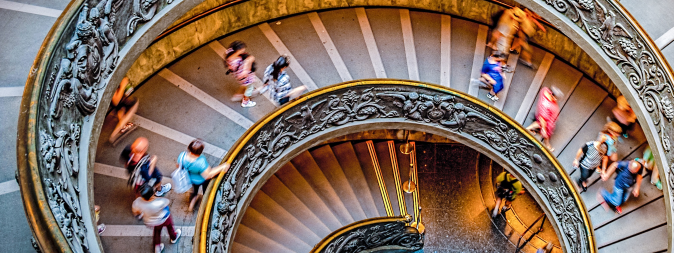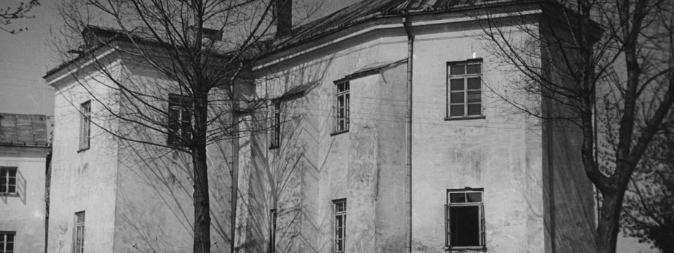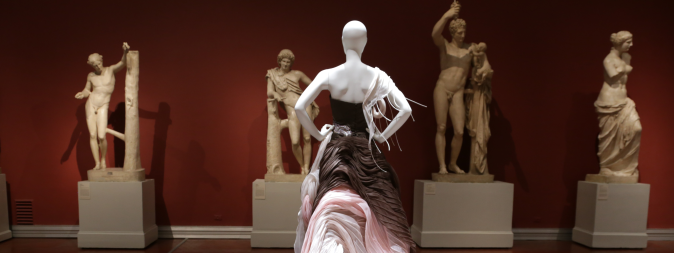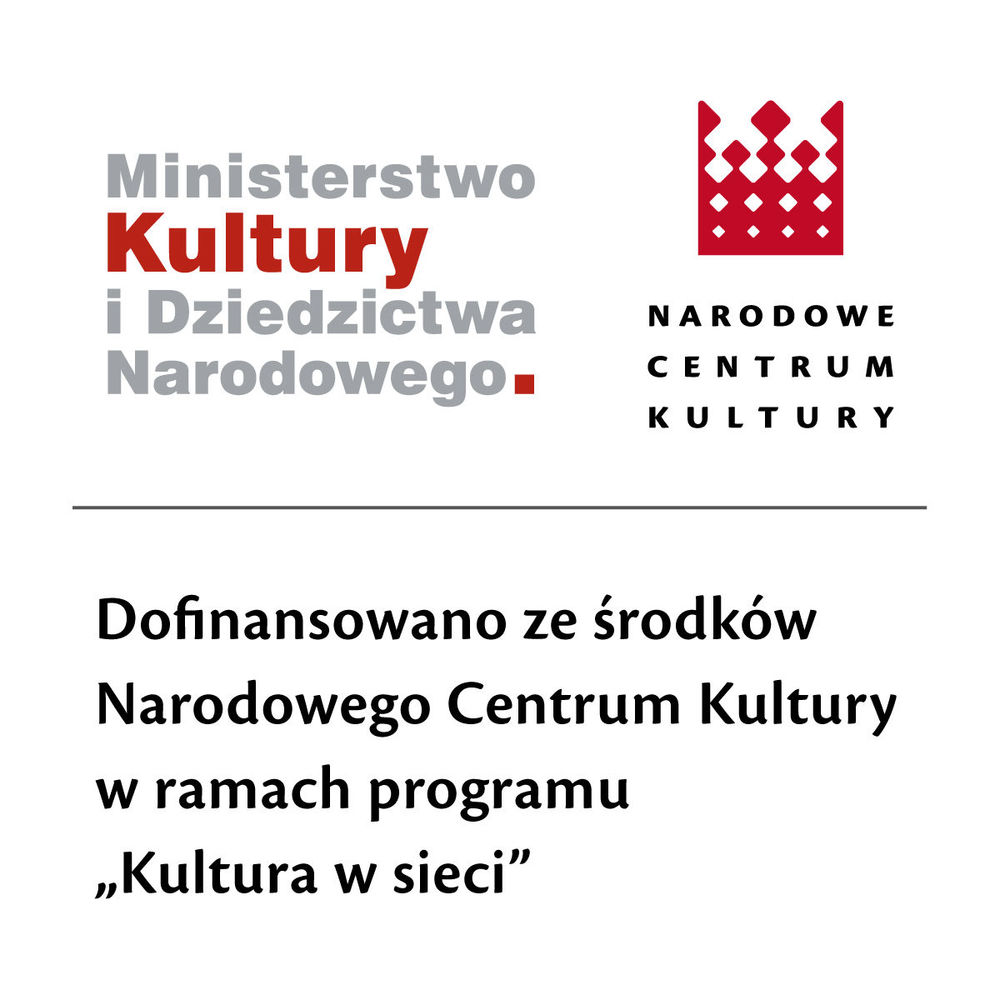Permanent exhibitions
Most interesting archaeological findings
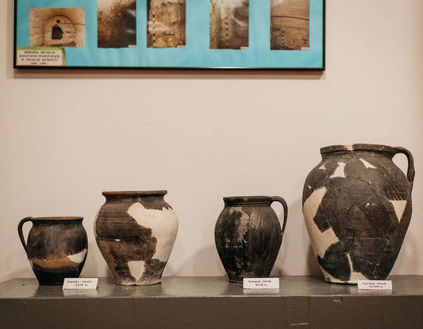
Presenting 335 artefacts acquired during archaeological research and monitoring carried out in various parts of Krasnystaw, this exhibition offers a detailed view of the history of our town and its urban development from prehistory till present day. The most numerous group of items are the ones found during renovation works of former Jesuit College which was erected on the grounds of 17th-century town houses and then used for three hundred years.
Najliczniejszą i najbardziej różnorodną grupę eksponatów stanowią zabytki odkryte podczas remontu dawnego kolegium jezuickiego, wzniesionego na fundamentach XVII-wiecznych mieszczańskich kamieniczek, a użytkowanego przez 300 lat. Po kasacie zakonu jezuitów w 1773 r., w budynku klasztornym mieściły się m.in. koszary wojskowe i lazaret. Stąd udokumentowana różnorodność zabytków. Najwięcej znaleziono ceramiki naczyniowej, w tym fragmenty ceramiki pradziejowej, prawie całe naczynie z okresu wpływów rzymskich, kilka naczyń, głównie siwaków, wiele fragmentów talerzy, mis, garnków z gliny: siwych, szkliwionych, połmajolikowych, datowanych od XIV do XX w. Wśród przedmiotów użytkowych znalazły się również: gliniane cybuszki fajek, porcelanowa waza (Anglia, ok.1847 r.) oraz kilka fragmentów naczyń fajansowych i porcelanowych. Drugą liczną grupę zabytków stanowią naczynia szklane i ich fragmenty, w tym kielichy i stopki kielichów, pucharków, szklaneczki z XVII-XVIII w., butelki i buteleczki (XIX-XX w.).
Niedużą grupę eksponatów, jednakże bardzo ciekawą, stanowią monety, w tym srebrny szeląg Stefana Batorego wybity w 1586 r. i szelągi litewskie z XVII w., wyroby z żelaza, takie jak zawias do drzwi, gwoździe kute, podkowa, ostroga, scyzoryk francuski Opinel w drewnianej oprawie, miedziany kubek i czajnik oraz sakiewka skórzana. Do niezwykłych okazów należą "skamieniałe drzewo" i nieokreślony przedmiot z piaskowca.
W dawnych obiektach o różnej funkcji, m.in. katedrze, kolegium jezuickim, znajdowały się piece grzewcze zbudowane z kafli. Najstarsze zachowane we fragmentach mają kształt trójkątny z bogato zdobioną płytką (XVI-XVIIw.) i pochodzą prawdopodobnie z nieistniejącej katedry. Pozostałe mają glazurowaną na zielono lub brązowo płytkę i tylną część, zwaną kołnierzem (XVII w.). Oprócz nich ocalały bardzo dekoracyjne kafle XVIII-wieczne malowane kobaltem, a także XIX-wieczne, w tym narożne oraz zakończenia pieców.
Uzupełnieniem wystawy są fotografie ukazujące przebieg prac remontowych w budynku dawnego kolegium jezuickiego w latach 1995-98, rekonstrukcje planów Krasnegostawu w 1 połowie XVI w. i XVIII w. wg K. Pawłowskiego z 1968 r., odbitki planów z 1811 r. i 1830 r. oraz widoków zamku wg akwarel Z. Vogla z 1794 r. i 1812 r.




